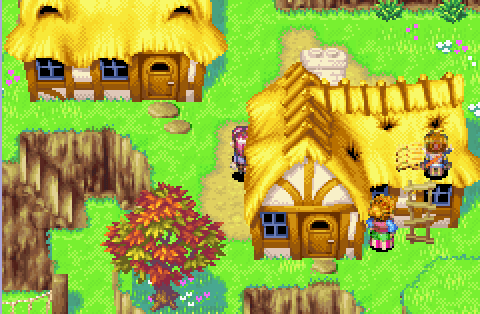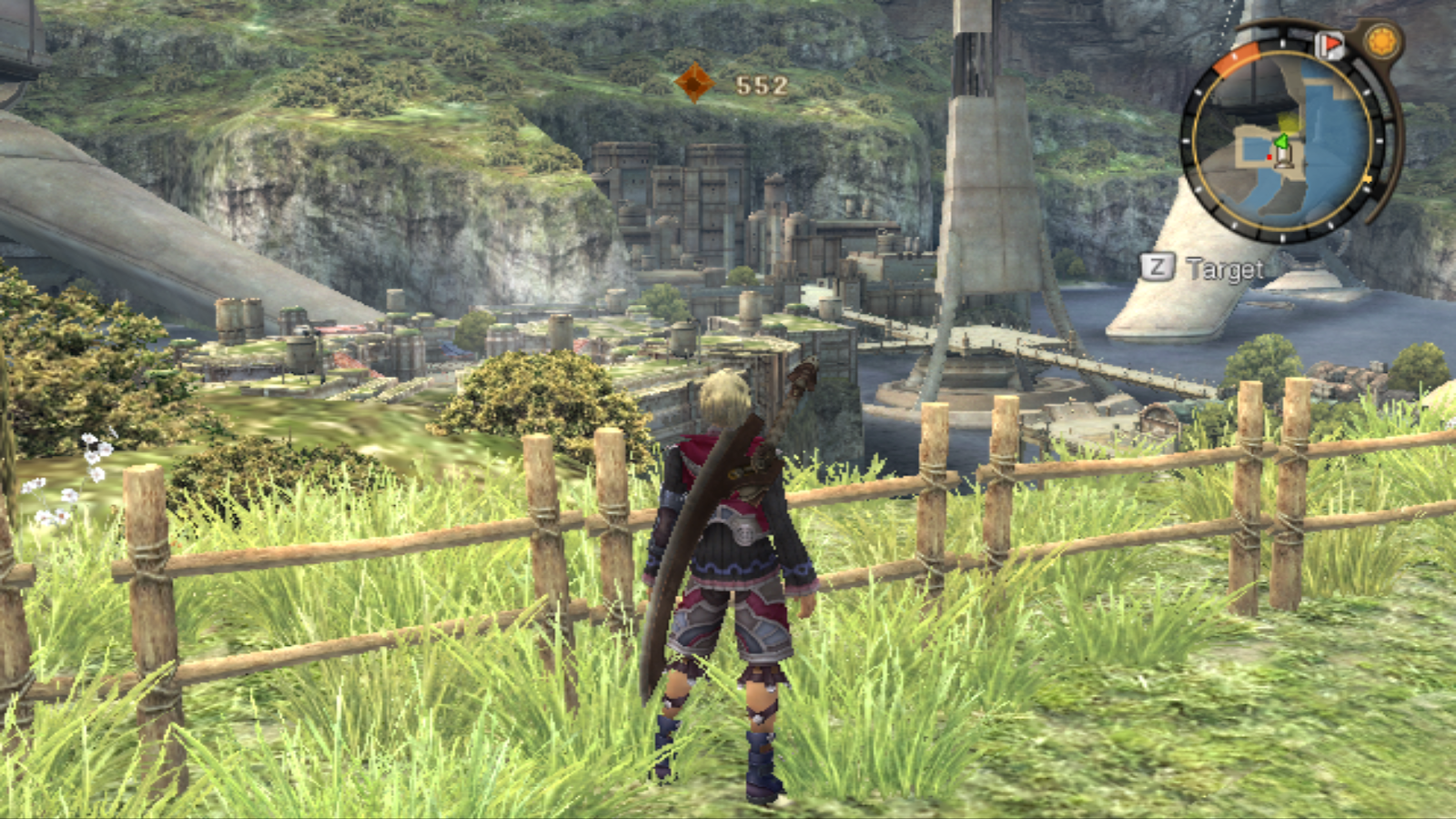Earlier this week, over at IGN, Colin Moriarty penned an opinion piece titled “Are JRPGs primed for a comeback?” His thesis? That the genre has lost relevancy following Final Fantasy VIII, a game released way back in 1997.
“Before anyone knew what happened, the genre’s lauded quality from the last decade of the previous century gave way to something that, for many gamers, fans or not, became a laughingstock,” Moriarty argues. “By the time Final Fantasy XIII came around, it was clear that the glory days weren’t only gone. They were buried. And it wasn’t at all obvious if they were coming back, no matter how many Phoenix Downs you threw at it, or how powerful your cure magic was.”
He then argues that the genre is primed to make a comeback. First he points to Ni No Kuni and Bravely Default as games that are showing that the genre is again returning to its glory days, and then writes “And then there’s the future, a future heavily occupied by smaller, independent studios that are doing their best to give JRPG fans what they want, even if the big guys in the industry won’t.”
It’s a confused article. On the one hand Moriarty implies that relevance is tied to prominence – that a game like Final Fantasy VII brought the genre into the mainstream and then the idea that no JRPG since has had that level of impact since is a sign that the genre has faded. But then he suggests that indie games – games that are certainly not going to have the impact of Final Fantasy VII – are returning the genre to its glory days.
Then he seems to argue that it’s actually quality that determines the JRPG genre’s relevance. And that’s fine. But when the bulk of the games that he references between the release of Final Fantasy VII and Ni No Kuni comes from Square Enix or Namco Bandai, one has to wonder if Moriarty has had enough exposure to the genre to form such an opinion.
Or, in other words, Moriarty’s article is nonsense. When he makes a statement like this: “But evidence is mounting that it’s coming back, with an emphasis on story and characters, statistics and combat. Not quick turnarounds, painfully cliche characters and stories, and lowest common denominator-like tripe that somehow gets confused for JRPGs these days,” then you know he’s writing nonsense, since these traits have never left the genre.
So I’ve decided to use the Friday ten list this week to highlight, using examples, how nonsense Moriarty’s article is. What I’ve done is selected ten JRPGs that were released after Final Fantasy VII and before the PlayStation 4/ Xbox One that show that the genre has continued to offer clever narratives, interesting combat systems, innovation and tradition alike. I must emphasise this is not a complete list. It’s a fraction of the games that have been released between 1997 and now that fit what Moriarty claims he’s looking for in a JRPG. I’ve selected games across most of the important platforms between then and now (PS1, 2, 3, Game Boy Advance, Nintendo DS and Wii, and Xbox 360), just to highlight that the genre has also been perfectly relevant across multiple platforms.
And, I’ve deliberately chosen a mix of mainstream JRPGs, and some of the more niche examples of the genre. After all, Moriarty believes that indie and small developers can create classic JRPGs, and in that much, I agree with him. Budget size and sales do not in themselves indicate a quality game.
Feel free to list more games that were released between 1997 and 2014 that you believe belong on this list in the comments. On the off chance that Moriarty reads this it might provide him with something of an education.
Vagrant Story (Sony PlayStation 1, 2000, Metacritic average: 92)
It’s hardly a traditional JRPG, but the near universal acclaim that Vagrant Story received on its release and the years after is entirely deserved. This dark action RPG features incredible puzzles and tight, engaging combat, as well as a story that will keep you on your toes all these years later. For its time it was something of a looker too, and while it’s aged, the art direction of this opus is superior, and certainly the game has withstood the test of time better than even Final Fantasy VII. It was released two years after that game, Moriarty.
Golden Sun (Game Boy Advance, 2001, Metacritic average: 91)
In stark contrast to the innovation of Vagrant Story is Golden Sun; as traditional as JRPGs come in terms of its narrative. With that said it had a couple of unique tricks up its sleeve. Each of the characters has magical abilities that can be used outside of combat to solve puzzles in each of the villages and dungeons. These puzzles eventually became quite complex and involved. Throw in the amazing art style and music that really pushed the GBA to its limit and the game was perhaps the first genuine classic portable-exclusive JRPG, and it’s timeless enough that it’s a must-have on the Nintendo Wii U Virtual Console, too.
Shadow Hearts: Covenant (Sony PlayStation 2, 2004, Metacritic average: 85)
From the tiny (and now sadly defunct) Nautilus is Shadow Hearts: Covenant, a game that almost no one remembers from a franchise that almost no one remembers. But it deserves to be remembered, because it combines unique gameplay features around a “ring” system with a unique plot. Set in an alternate world after World War 1 it’s a story of demons, politics, and magic, and at the time it was one of the most gorgeous games on the market. These are the kinds of JRPGs that made their way to the PlayStation 2 in droves – not quite classics like the best Final Fantasy games, but incredibly worthy, and always forgotten about when people rue the supposed “decline” of the genre. To put that in context it would be like conveniently forgetting that a game like Crysis existed in a decade or so and complaining about the “decline” of the FPS.
Lost Odyssey (Xbox 360, 2007, Metacritic average: 78)
Of all the games that Hironobu Sakaguchi has done since leaving Square Enix and the Final Fantasy franchise that he created behind, Lost Odyssey is the finest. A sprawling, traditional turn-based JRPG that very much feels like a Final Fantasy game in everything but name, Lost Odyssey is accompanied by one of the finest soundtracks that we’ve ever heard in a game (seriously, it’s even been performed in the game music symphonies that tour the world). The narrative is more than deep enough, too, accompanied by short stories written by a famous author in Japan (Kiyoshi Shigematsu), and there’s more than a few tear-jerker moments in there too. This game is everything that Moriarty claims he wants in a classic JRPG experience.
Etrian Odyssey (Nintendo DS, 2007, Metacritic average: 75)
In terms of getting simple gameplay mechanics right, you can’t really look past Etrian Odyssey. This traditional dungeon crawler deliberately invites nostalgia by asking players to draw their own maps as they go along, but offers a beautiful art style and soundtrack to modernise the experience. The combat is difficult and rewarding, and while there isn’t much of a story to follow, this throwback to old school RPGs such as Wizardry, and the fact that Atlus has continued to expand on the franchise since, shows there is an enduring demand for it.
Persona 4 (PlayStation 2, 2008, Metacritic average: 90)
In one of the most illogical parts of Moriarty’s article he claims that Persona 5 on the horizon is a “light at the end of the tunnel,” or a sign that the JRPG is primed to make a comeback. Well, okay. The reason Persona 5 is so hotly anticipated is because Persona 3 and 4 came before it and established it as a franchise that is not just entertaining as games, but also deep, intelligent and rewarding narratives. In other words, what Persona 3 and 4 offers is everything that Moriarty spends most of his article arguing hasn’t existed since Final Fantasy VII, and is why he is looking forward to Persona 5.
Demon’s Souls (PlayStation 3, 2009, Metacritic average: 89)
How anyone could look at the output of From Software and argue that the JRPG is in decline? This company has been putting out quality games for years now, from the obscure (Lost Kingdoms and a sequel on the Gamecube) to the mainstream (Dark Souls). But Demon’s Souls deserve a special mention because it took the existing King’s Field franchise (already a very good series in its own right) and modernised it in such a way that ensured it remained relevant to a modern audience. It also led to the Dark Souls games, and so this game shows the genre’s raw capacity to evolve.
Xenoblade Chronicles (Nintendo Wii, 2010, Metacritic average: 92)
Xenoblade Chronicles is a heck of a vision. A massive open world game set in an entirely unique environment, the game offers an superb, modern combat system, a sprawling, traditional narrative, and the best production values that we saw on the Nintendo Wii. That console was often dismissed by JRPG fans, despite having plenty of decent games released on it over the years, but with Xenoblade, it became an essential console to own for anyone that liked the genre.
Nier (PlayStation 3, 2010, Metacritic average: 68)
One of Moriarty’s core complaints about JRPGs is the lack of classic narratives they have apparently offered since Final Fantasy VII. What Nier shows us is that, frankly, a lot of game critics need to go back to university and get themselves degrees in art criticism and/ or literature so they can understand a narrative before sitting down to criticise it. Nier was a polarising game with critics, with scores ranging from 90 through to 40, and I would suggest that is because Nier offers an intense, difficult narrative with a lot of philosophy and complex concepts to work though. I don’t think the typical critic has the time, much less the interest, to understand how the game works with nihilism and/ or existentialist theory, and so instead they focus on the superficial; the “graphics,” or figuring out how much fun it is to press the X button. I imagine Moriarty falls in the latter, despite his demands that JRPGs learn how to tell “good stories” again.
Atelier Rorona Plus (PlayStation 3/ PlayStation Vita, 2014, Metacritic average: 80)
I use Atelier Rorona Plus as just an example, though Atelier Ayesha, Atelier Escha & Logy, or even the PlayStation 2 games in the franchise would fit the bill just as well. The reason I’ve included this franchise is to highlight that Moriarty’s “discovery” that the JRPG genre has picked up small developers creating “entertaining games that JRPG fans want,” have existed right through his “dark ages of JRPGs.” GUST is just one developer, but there are others, that has been razor-focused on the classical JRPG fan for years now; building games specifically for that audience even though they do so knowing the franchise will never be considered “mainstream.”
As I said, there are a lot more worthy JRPGs that have been released from between the release of Final Fantasy VII and today. I encourage you all to create your own lists in the comments below. At the very least, this list demonstrates that Moriarty’s article is nothing more than a completely unsubstantiated and indefensible bit of subjective writing. It’s simply an example of terrible column writing.
– Matt S.
Editor-in-Chief
Find me on Twitter: @digitallydownld

















